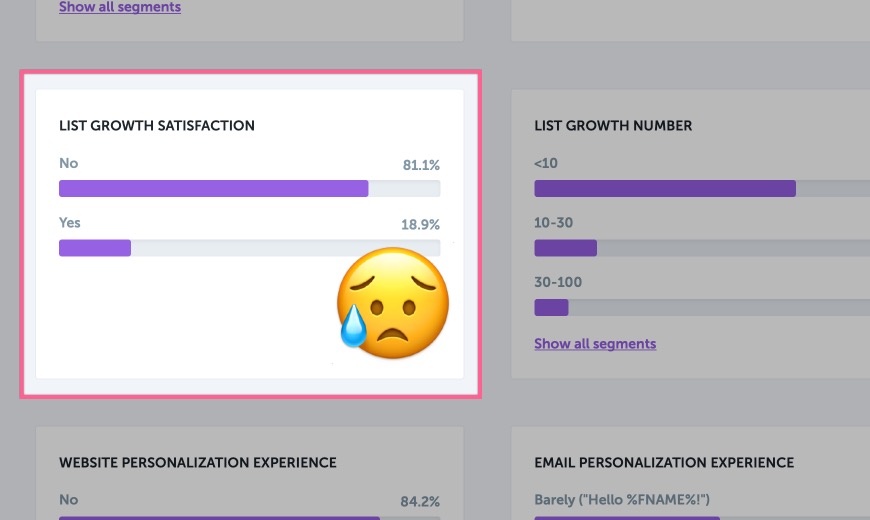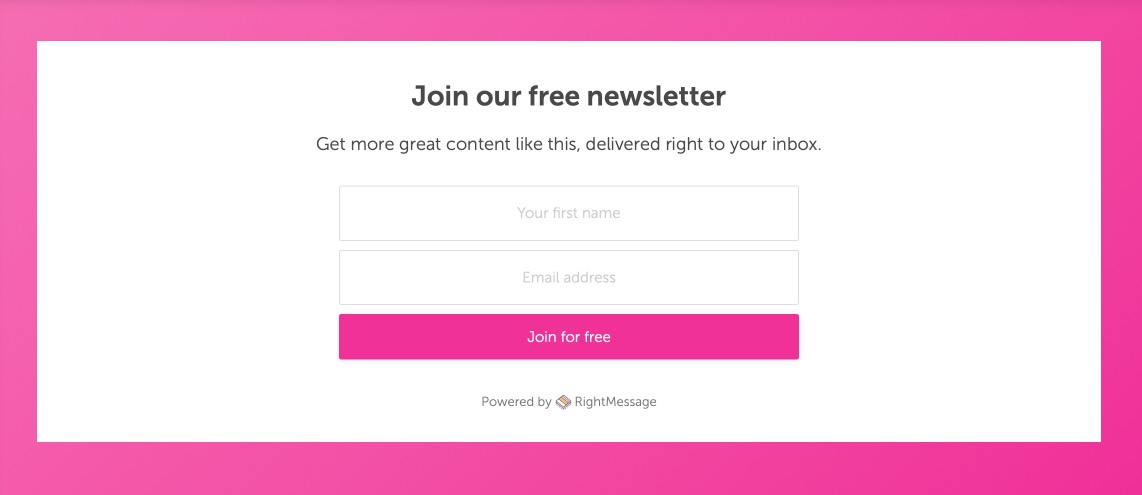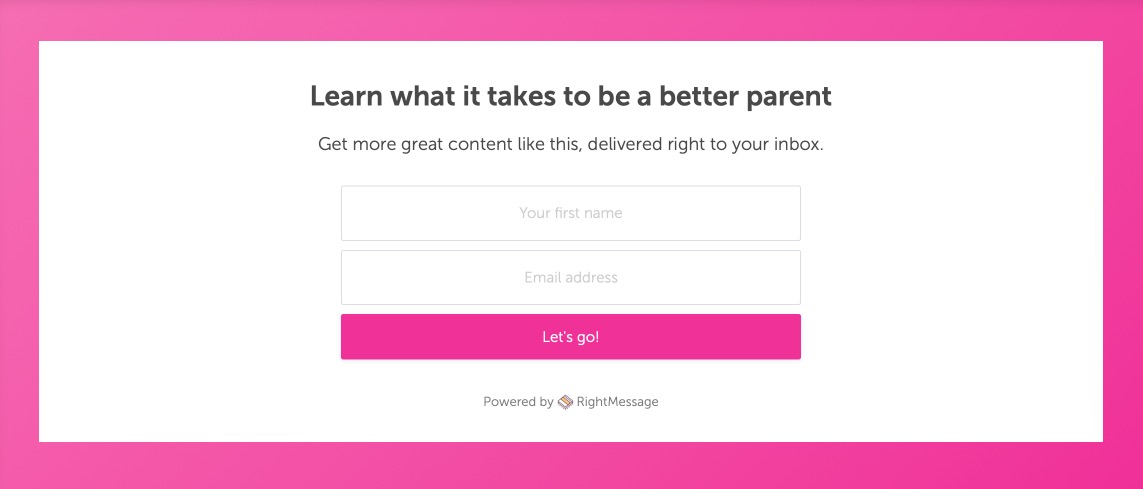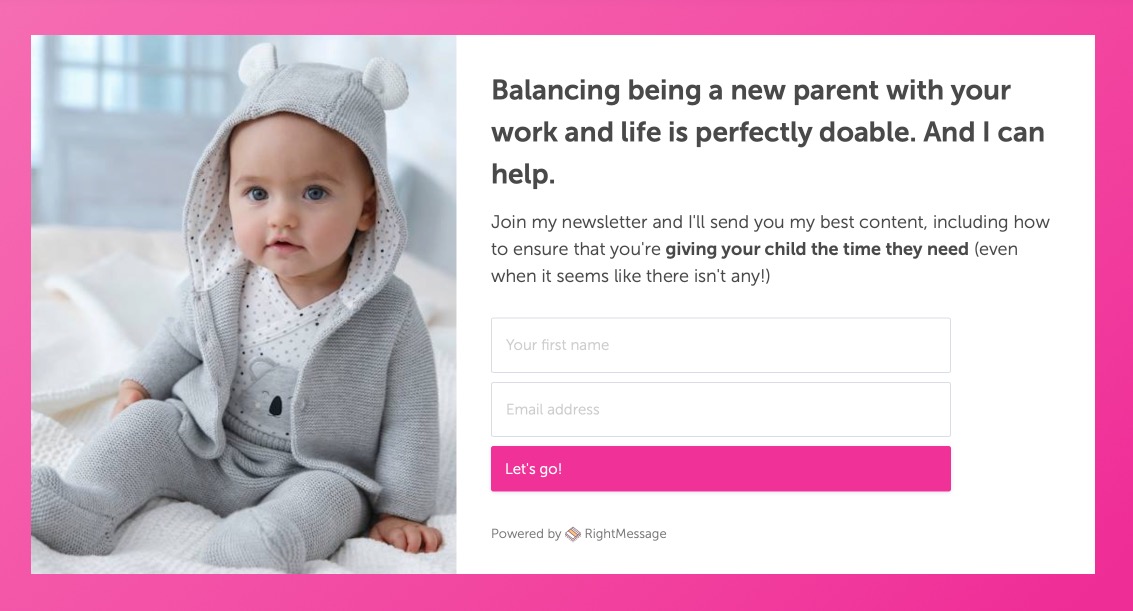What's The Best Way To Grow Your Email Newsletter?
Based on some internal surveying we’ve been doing, a whopping 81.1% of you aren’t happy with how fast your list is growing.

When my friend Rob Walling was starting Drip, he talked a lot about how hard it was to “turn drive-by visitors into subscribers.”
This concept of “drive-by visitors”, along with how incredibly disheartening it was to know that nearly everyone who visits your website won’t care enough to hear from you ever again, has stuck with me over the years.
According to Sumo, if you’re getting close to 1.95% of people joining your email list then you have an average opt-in rate.
But how demoralizing is it to know that 98% of people who visit your site won’t end up ever wanting to hear from you?
I spend a lot of time in online communities full of marketers. And the majority of people I talk with have some sort of newsletter opt-in form somewhere on their website.
These opt-ins almost always underperform. But they don’t need to. In fact, newsletter opt-ins can do really well.
I wanted to put together a brief overview on how you can improve and optimize how you’re turning website visitors into newsletter subscribers. This really won’t take you long to act on, and once you do you can double, triple, or – in our case – 4.5x the typical opt-in rate.
“I love getting more email.”
- Said no one, ever (except for me, circa 1995, after my parents let me sign up for AOL.)
Two things are universally true:
- We all get too much email.
- Every business wants your email address.
Traditional content marketing / email list building best practices would have you write content, put it on your blog, and then add email opt-in forms.
The idea? 1.95% of people who read your content will probably opt-in.
Those opt-ins become leads. And leads are people you can sell to. The result? A numbers game.
Building an email list, no matter how incredibly compelling your opt-in offer, is always going to be a numbers game. However, there are a few things you can (and should) be doing in order to make the likelihood that someone opt-ins higher.
The underlying problem is a perceived lack of outcome
Think about what’s going through the mind of someone who just read your latest and greatest blog post…
If they made it to the bottom, they liked it well enough to not close the tab or return back to their list of search results.
This person is ridiculously qualified. Why? Because they gave you time and attention and decided to read what you had to write.
If you’re pitching someone on getting future content from you, you’re leaving it up to the reader to determine how that future content will help them.
For example, you have an article on starting a business.
They read the article and see your newsletter opt-in form at the end of it.
Let’s say your form looks like this:

“Get more great content like this, delivered right to your inbox.”
OK, let’s think about this for a second.
Why should someone want more content for you? “Easy! If they liked what they just read, they’ll obviously want more of it.”
That’s true for some people, because they’ve internalized “your writing” = “something that’s can genuinely help them.”
But most people don’t have the time, attention, or will-power to really connect the dots. By just offering “future content”, you’re not implying any specific outcome. And you’re leaving it up to the reader to figure out how what you’ve got can materially help them.
Instead of just promising future content, explain exactly how joining your list will benefit them.
This might sound obvious, but so many marketers aren’t actually doing this. We’re just promising wishy-washy future content – without actually tying together how what we’ll be sending will specifically help them out.
There are a few ways to fix this, each of which having varying degrees of effectiveness.
Basic Optimization: Who’s your average subscriber?
The first is to generalize your audience and their needs. If you have a blog that’s dedicated to parenting, you figure out who your average subscriber is and what they need, and come up with a stock problem that joining your list helps solve. (Check out our guide to segmentation for ideas on how to survey your list to figure out what this problem might be.)

While an improvement, it’s still a bit weak.
What if I’m a single parent? Is this just going to talk about how happy couples can raise their kids?
Or maybe I have teenagers? My days of changing diapers are behind me, and I really don’t want to join if this is just going to be a bunch of stuff for new parents.
Improved Optimization: What they’re reading now → what you’ll give them
To level-up this newsletter opt-in offer, you could take into account what kind of content your visitor is reading. Unless you’re able to analyze trends in consumption (comes standard with RightMessage!), you’re probably limited to just the current article being read.
If someone is on your parenting blog and is reading an article titled, “How To Prepare Your House For A Walking Child”, you can probably safely assume that the visitor has a child who’s on the verge of walking.
And then you could further tailor your newsletter opt-in to be a bit more specific to them:

Your newsletter is no longer now just promising stuff on being a better parent. Rather, it’s now laser focused on how, by joining your email list, they’ll learn how to be a better new parent to a new toddler.
Pro Optimization: Lead in with a simple survey
You can infer a few things about someone based on what they’re reading right now, but that only goes so far. And when they’re on a webpage that isn’t an article, you don’t have any context – so you’ll likely have to revert back to your generic “become a better parent” opt-in form.
The single best way we’ve seen to increase opt-ins is through the use of a pre-optin survey.
Initially, this might sound counterintuitive. If the goal is to get someone to leave their email address, surely prefacing that with a survey would mean fewer people see your opt-in form – right?
Yes, but. While fewer people see your opt-in form, as long as more people are converting after seeing it you’re not only getting more opt-ins than before, but you’re also getting higher quality, segmented opt-ins.
Using a tool like RightMessage, you can provide visitors with a short survey and then display a personalized, and super specific, opt-in.
Here’s a super simple hypothetical survey…
Imagine someone shows up anywhere on your website. In the bottom right corner, out flies out a simple “click-the-best-answer” survey:
“I want to help you be a better parent! How many children do you have?”
- One on the way!
- 1
- 2
- 3+
- Still thinking about it
Imagine someone answers the first option – ”One on the way!” They’re probably wondering how be a great dad or mom, so let’s ask them what they’re chiefly worried about:
“Congrats! What’s your biggest fear about becoming a new parent?”
- I don’t know where to begin
- Balancing being a parent with everything else
- I’m worried I’m not good enough
- Something else
They answer “Balancing being a parent with everything else”.
Now you can display a perfectly personalized opt-in that clearly explains how YOUR email list can help with THEIR set of unique challenges.

Or if they went down the teenager path, let’s give them something a bit more fitting than a baby in a cute bear outfit:

Same “offer”, different positioning…
At the heart of this all is a focus on relevance.
No matter what you’re using to grow your email list, what matters most is how you position what you’re offering (your newsletter) against the need someone has.
A shot-in-the-dark “join my newsletter” opt-in will get some people, but if 1.95% is the norm, why wouldn’t you focus on doing whatever you can to optimize that number?
We’re personalizing how to pitch our email course, and right now we’re hovering at around 8.5% of anonymous visitors opting in:

At a minimum, position your newsletter opt-in against a generic need that most people who read your content most likely have.
But, if you’re ready to really throw fuel on the fire, use surveying and content consumption behaviors to pitch your newsletter to make the most amount of sense – and be as relevant and compelling as possible – to each and every website visitor.
- About Us
- Contact Sales
- Contact Customer Support
- © RightMessage Inc. 2024
- Privacy Policy
- Terms of Service
